The Bedroom, that space intimate and personal where days start and end, can be transformed into the perfect setting for capturing photographs full of authenticity, style, and emotion. Far from landscapes or artificial backdrops, bedroom photos offer a cozy and genuine atmosphere that allows you to capture the essence of the person posing. In this private environment, the natural light streaming through the window, the soft tones of the bedding, and small decorative details become elements that enrich the composition and add visual warmth.
Photos taken in the bedroom not only aim to showcase a beautiful setting but also to tell a story: a moment of rest, an introspective pause, or even an energetic morning. The right poses can highlight the subject’s personality, mood, and style without the need for complex production. The key is to take advantage of the environment to create a visual narrative that feels natural and spontaneous.
Through the next five ideas, we’ll explore different ways to pose in the bedroom, from relaxed poses on the bed to shots by the window or in front of the mirror. Each one is designed to capture a different emotion, combining comfort and aesthetics. The most important thing is to maintain a genuine connection with the space: every object, texture, and ray of light can add depth to the portrait if used intentionally.
1. Siting on the Bed with natural light
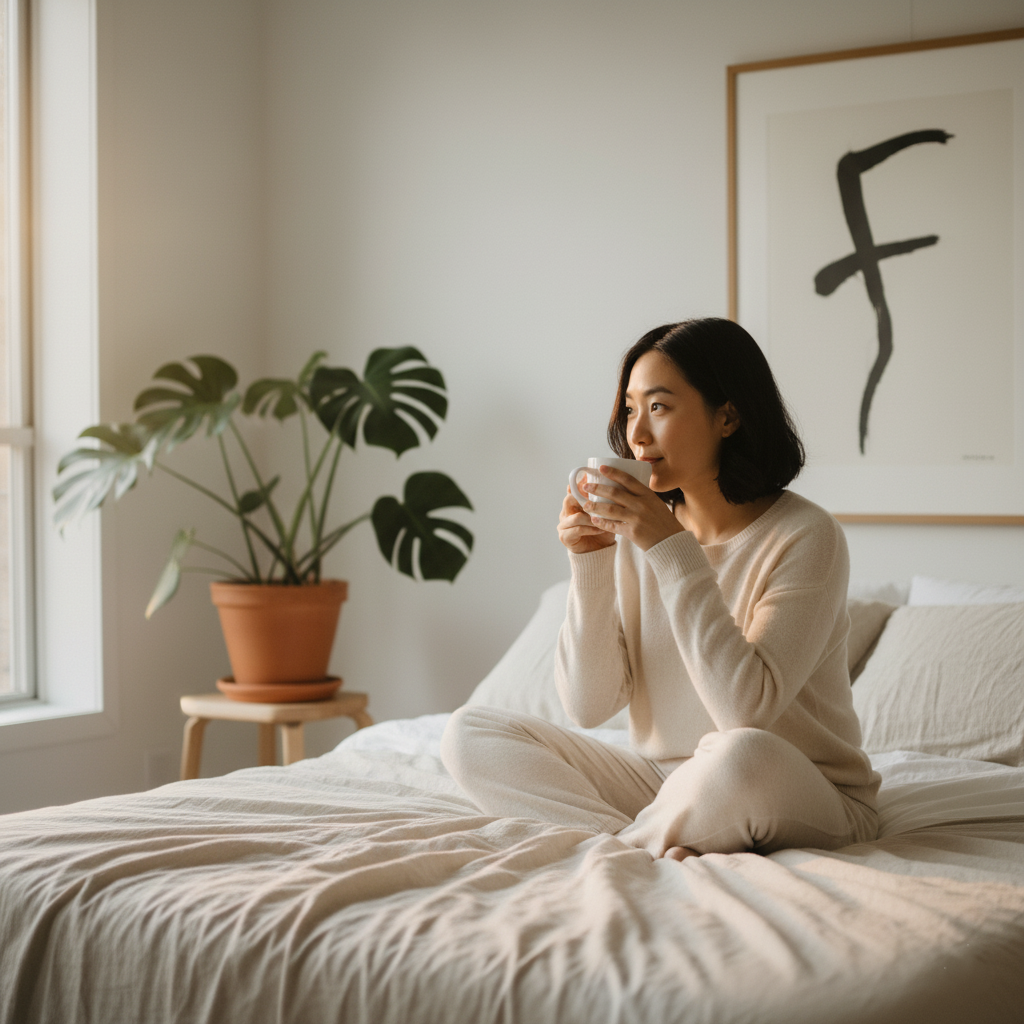
One of the simplest and most aesthetically pleasing poses for photographing in the bedroom is sitting on the bed, taking advantage of the natural light entering through the window. This pose conveys calm, authenticity, and a connection to the surroundings. It doesn’t require elaborate production or props; the key lies in the naturalness of the gesture and the harmony between the subject and the space. The bed becomes an intimate setting where everyday moments are reflected, which can become visually powerful.
The ideal position is to sit near the edge or in the center of the bed, with your back straight or slightly leaning forward, creating a sense of closeness and trust. Your legs can be crossed or bent, depending on the style you want to project. If you’re aiming for a relaxed image, wearing comfortable clothing, such as a light shirt or sweater, adds authenticity and warmth. Your facial expression should be calm, accompanied by a soft look or a slight smile that evokes introspection.
Natural light plays a leading role. A beam of light filtering through a curtain can create an effect of serenity and depth on the face. It’s advisable to avoid harsh contrasts, allowing shadows to gently envelop the contours. You can also play with objects like a cup, a book, or a blanket to add texture and reinforce the sense of intimacy. This pose is perfect for personal portraits, lifestyle shoots, or visual content that aims to reflect calm and everyday life. Its strength lies in its sincerity: a photo that appears to have been taken during a moment of rest can, in reality, convey a powerful sense of emotional connection
2.Standing next to the window
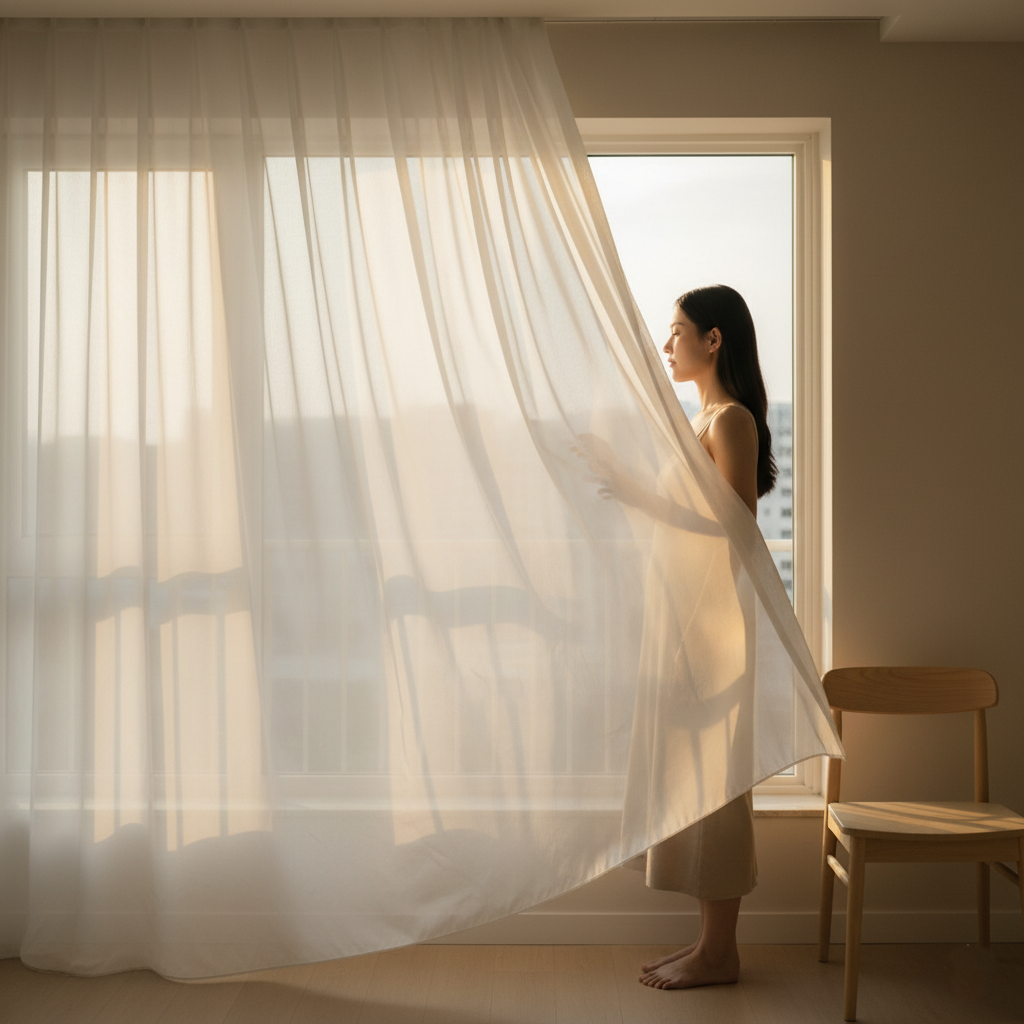
Posing standing by a window is one of the most effective ways to take advantage of natural light in a room. This pose combines elegance, introspection, and a dreamy atmosphere. The window acts as a source of natural light that gently envelops the face and body, creating delicate shadows that add depth and drama. It’s ideal for portraits that aim to convey serenity, reflection, or a sense of the beginning of a new day.
The posture should be relaxed yet confident. The subject can stand sideways, looking outward, or turn slightly toward the camera, allowing the light to illuminate only part of the face. If the intention is to show a sense of calm, the hands can rest on the window frame or be gently clasped in front of the body. On the other hand, if a more introspective portrait is desired, looking outward with a calm expression can convey a quiet story, as if the person were contemplating their thoughts.
The surroundings also help to reinforce the atmosphere: a translucent curtain moving in the wind, a plant on the windowsill, or the texture of the walls can add details that lend realism to the composition. Clothing should complement the tone of the scene: neutral or pastel shades work best to maintain visual harmony and not distract from the expression.
This pose makes the most of the relationship between light and emotion. The window symbolizes openness, hope, or even nostalgia, depending on the framing. It’s an invitation to capture an intimate moment without artifice, letting the light and silence speak for themselves.
3.Laying down among shadows
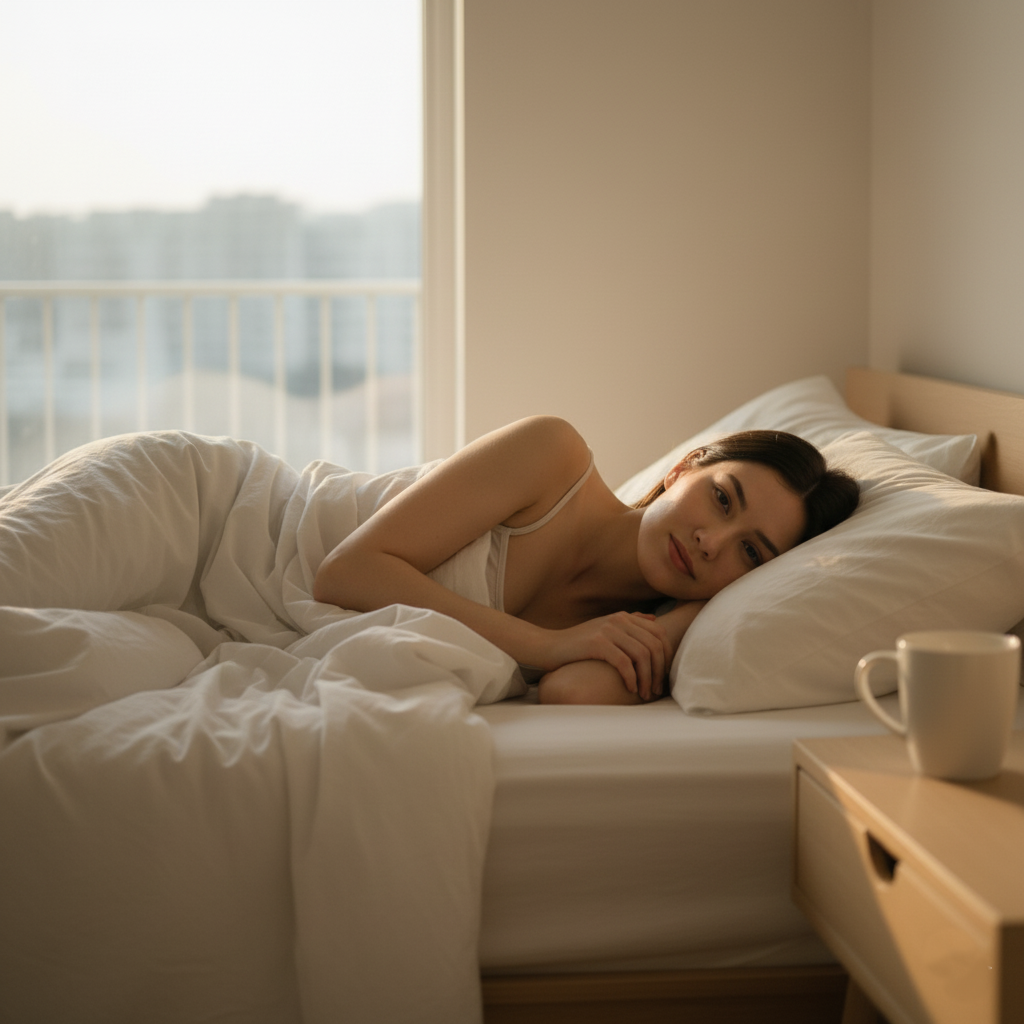
The pose of lying between sheets maybe one of the most intimate and expressive in bedroom photography. It’s not just about capturing a resting position, but about reflecting vulnerability, calm, or sensuality, depending on the desired focus. In this position, the body and the surroundings merge into a composition that evokes naturalness and closeness, inviting the viewer into a private moment full of emotion and subtlety.
The secret lies in the pose and the use of light. The person can lie on their side, looking towards the camera with a serene expression, or on their back, with their head gently turned to one side. The sheets, more than just a background, become a narrative element: they can partially envelop the body, creating textures and lines that guide the eye within the image. Light colors, such as white or gray, contribute a sense of purity and calm, while darker tones create an introspective and sophisticated atmosphere.
The ideal lighting comes from a nearby window, preferably from the side, so that the shadows gently caress the contours of the face and body. For a more intimate atmosphere, a warm lamp or the afternoon light can add a touch of emotional warmth. The important thing is that the pose feels organic, as if the moment were captured spontaneously during a pause or a peaceful sunrise.
This approach is perfect for conveying closeness and authenticity, especially in lifestyle sessions or personal portraits.
4.In Front of the Mirror
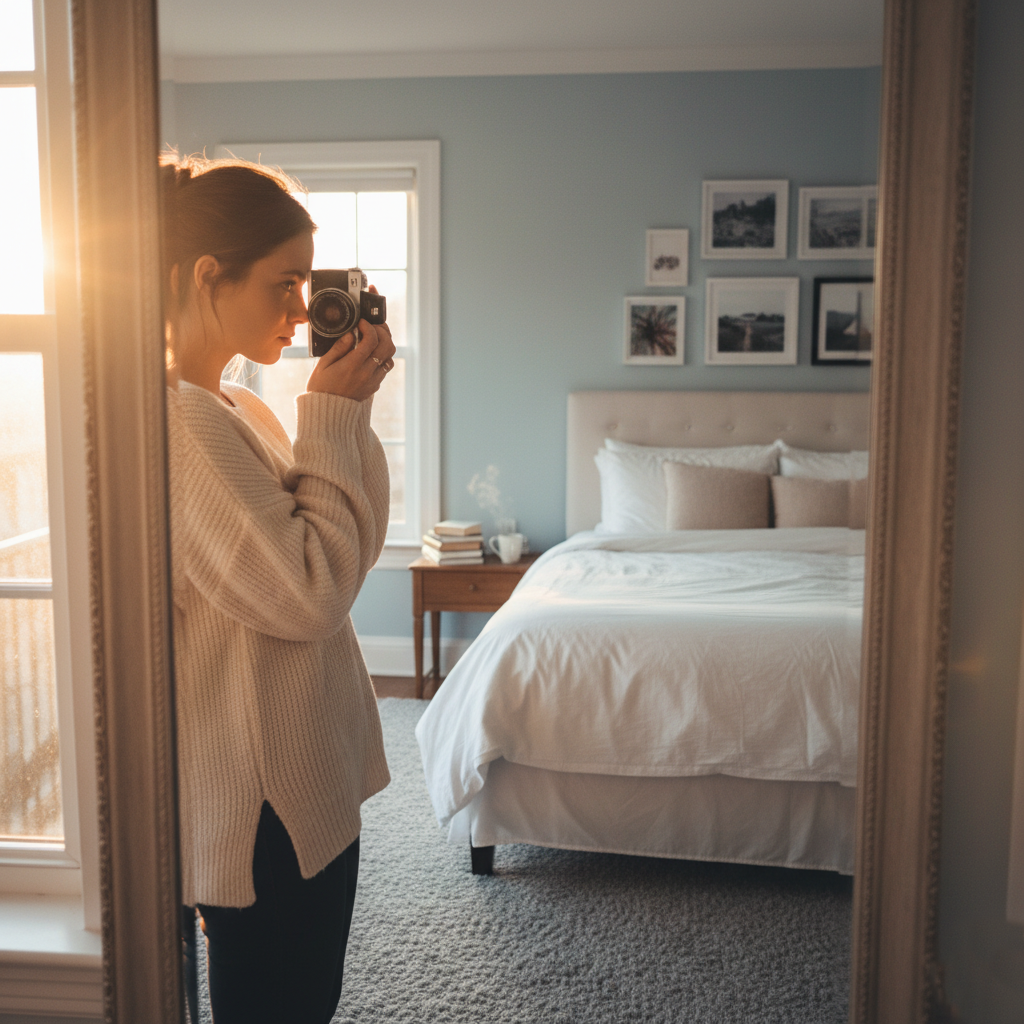
Posing in front of the Mirror inside the room is one of the most versatile and expressive ideas there is. This pose allows you to explore the duality between what is shown and what is reflected, creating an interesting visual interplay that blends introspection and style. Besides, it’s an effective way to incorporate depth into the composition without leaving the intimate setting of your room. The mirror becomes an accomplice, an extension of the subject, capable of capturing emotions from two perspectives simultaneously.
The pose can vary depending on the intention of the photo. If you’re looking for a natural image, it will enough for the person to look at their reflection serenely, as if preparing themselves or silently contemplating something. If the purpose is more artistic or modern, you can play with the angle, focusing on both the subject and the reflection to create a sense of visual dialogue. The key is not to force the pose: let the gestures be soft, let the gaze be intentional, and let the body align with the space.
Lighting, once again, is essential. Natural light streaming in from the side of the mirror creates a subtle glow, highlighting the contours of the face and hair. For night time sessions, a lamp or string lights can add warmth and drama. The surroundings should be kept clean and harmonious; background details, such as a clean bed or a neutral wall, help maintain visual focus on the reflection.
This pose combines elegance and everyday life, making it ideal for self-portraits or creative sessions at home.
5.Walking within the Room
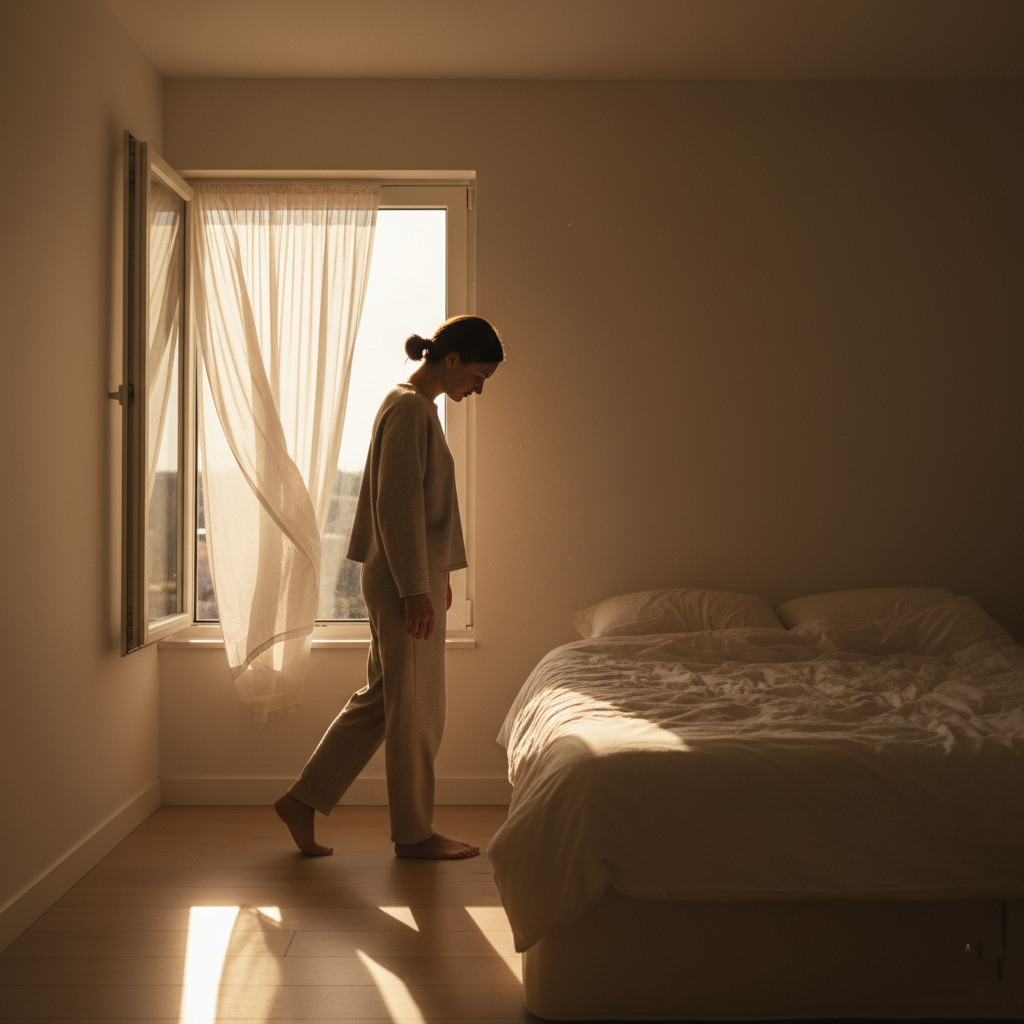
Catching movement within such an intimate space as a bedroom might be seen chalenging, but it’s one of the most effective ways to convey naturalness and dynamism. The pose of someone walking within the room evokes everyday moments: the instant before leaving, a pause between activities, or a leisurely stroll in time with the light streaming through the window. This type of shot breaks the stillness of the traditional portrait and adds life to the scene, showing the subject in action without losing the intimate essence of the environment.
To achieve this, the movement must feel fluid and spontaneous. The person can walk barefoot or in light shoes, moving slowly to allow the camera to capture the gesture clearly. The arms should move naturally with the rhythm, avoiding any rigidity. The look can be directed toward the floor or toward a point outside the frame, as if the thought were far away, creating a more emotional visual narrative.
The surroundings play a key role. The photographer can take advantage of the path between the bed and the window, or the space next to a curtain that moves in the breeze. Natural light takes center stage once again: when it enters from the side, it creates a sense of suspended movement, almost cinematic. For a more artistic effect, a slight background blur can further highlight the subject’s stride.
This pose conveys authenticity, gentle energy, and a sense of history. It’s ideal for portrait sessions that aim to capture a free and relaxed personality within an everyday setting.
Conclusion
Photographing in the bedroom is much more than simply making use of an interior space; it’s about capturing a fragment of intimacy, everyday life, and authentic emotions. The five ideas presented here show how this environment can be transformed into a versatile stage for exploring different facets of personality: from the calm of sitting on the bed, the introspection by the window, the vulnerability of the sheets, the connection revealed by the mirror, or the energy of movement. Each pose reveals a different story, all united by a common thread: naturalness.
In the bedroom, light and everyday objects become allies of photography. A perfect background or sophisticated decor isn’t necessary; what matters is the atmosphere achieved through the balance between the subject and the surroundings. The window, the bed, or the mirror are elements that, when used intentionally, add emotional texture to the image. What appears to be a private space becomes a visual canvas reflecting real, honest, and beautiful moments.
The power of bedroom photos lies in their ability to convey intimacy. These are images that invite contemplation, that exude serenity and authenticity. In times when naturalness is valued more than perfection, these kinds of portraits connect deeply with the viewer because they reveal the humanity behind the image.





